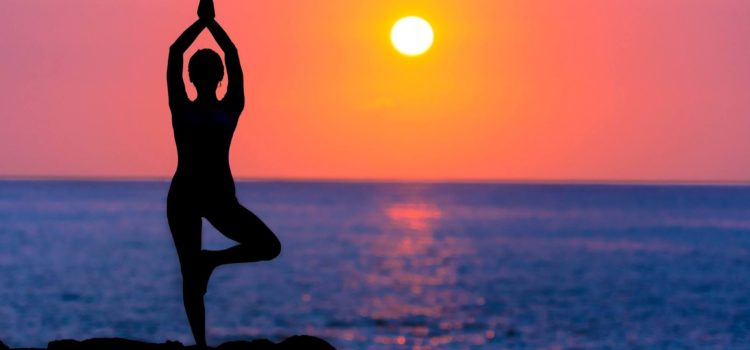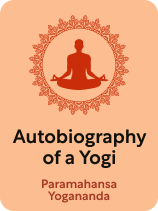

This article is an excerpt from the Shortform book guide to "Autobiography of a Yogi" by Paramahansa Yogananda. Shortform has the world's best summaries and analyses of books you should be reading.
Like this article? Sign up for a free trial here.
What are the key beliefs and practices of yoga? Paramahansa Yogananda is said to be the pioneer of yoga in America, how does he explain these basic principles?
According to Paramahansa Yogananda, yoga is a religious practice with numerous benefits, both physical and mental. Yogananda is known for bringing yoga to the West, and his memoir, Autobiography of a Yogi, delves into the basic principles of yoga, including kriya yoga.
Read on to learn about the key beliefs and practices of yoga, according to Paramahansa Yogananda.
Paramahansa Yogananda on Yoga
According to Paramahansa Yogananda, yoga is a religious practice that originated in Hinduism. Yogananda’s memoir, Autobiography of a Yogi, explores his life and accomplishments, including the key beliefs and practices of yoga. In the book, Yogananda also explains what distinguishes kriya from other forms of yoga.
Yoga: Defining Illusion & Reality
Paramahansa Yogananda explains that yoga is linked to Hindu teachings surrounding illusion and reality. The Vedas (the oldest Hindu scriptures) describe God as the only reality in the universe—thus, Hinduism teaches that all physical things, including you as an individual being, are illusions. These illusions are collectively called maya.
| What’s Real and What’s an Illusion? The nature of reality is a frequently discussed topic in Hinduism. For instance, in the Bhagavad Gita (one of Hinduism’s holy scriptures), the god Vishnu takes a human form named Krishna and discusses various religious and spiritual topics with the warrior prince Arjuna. One of Krishna’s key lessons for Arjuna is: Only things that are eternal and unchangeable are real. Therefore, the only things that are truly real are the soul—what he calls Purusha—and divine beings, like Vishnu himself. Everything else—anything that’s physical or experienced by the physical body—is an illusion (maya). Krishna elaborates that Purusha and divine beings are themselves only fragments of a single universal power and consciousness named Brahman—what others, including Yogananda, call God. Thus, although many living beings each have their own Purusha, each of them came from God and is part of God. These ideas about Brahman’s multiple forms bear resemblance to the Christian concept of the Holy Trinity: The Father, Son, and Holy Spirit are three separate entities, yet they’re also all aspects of the same God. By contrast, Brahman has countless different aspects—one for every living thing. |
The word yoga means “union with God.” According to Paramahansa Yogananda, yoga is designed to help you recognize and reject maya while accepting God. In doing so, you stop thinking of yourself as an individual, and you instead become a conduit for God’s knowledge, will, and power. Someone who achieves this is said to be enlightened.
With enough training and spiritual growth, a yogi can break through the illusions of maya and enter a state called samadhi, where their individual consciousness temporarily merges with God. Yogananda describes samadhi as a state of perfect bliss and total awareness—a yogi who enters samadhi sees and experiences the entire universe all at once.
Yogananda says that the strength of a yogi’s connection with God is measured by the intensity of their bliss while in samadhi—stronger feelings of bliss indicate a stronger connection and therefore greater progress in yoga.
(Shortform note: There’s some variation in how people understand and teach about samadhi. Yogananda presents samadhi as a spectrum, where the strength of your connection with God can be measured by how blissful you are while in samadhi. However, some other teachers say there are specific levels or stages of samadhi: For example, one describes three levels of samadhi, categorized by how far you separate from the physical world and your sense of self. Another says that there are four stages, based on how much active, conscious thought you’re experiencing. There’s also some dispute regarding the connection between samadhi and enlightenment—specifically, yoga practitioners disagree on whether these two concepts mean the same thing or are instead two different, but linked, states.)
What Is Kriya Yoga?
Paramahansa Yogananda says that kriya yoga is a particular style of yoga that heavily emphasizes pranayama: breathing exercises and controlling your inner life energy (prana). All forms of yoga include pranayama, but not to the same extent as kriya.
Yogananda explains that these breathing exercises remove toxins from the blood, which allows life energy to flow more freely. You might picture pranayama as removing trash (toxins) that’s blocking the flow of a river (blood and life energy).
(Shortform note: While some claims about yoga’s benefits lack scientific backing, evidence suggests that deep breathing and meditation exercises boost the immune system, making you more resistant to disease and what Paramahansa Yogananda terms toxins. One scientific explanation for this is that yoga reduces stress, and an improved immune response is a side effect of that; it’s also possible that breathing exercises involve the placebo effect, a phenomenon where people feel healthier simply by believing that they’re healthy.)
Once your life energy is flowing freely, Yogananda continues, you must then focus it around your central nervous system (spine and brain), which boosts your natural ability to perceive and understand God. In other words, these exercises are designed to help you reach enlightenment more quickly by strengthening your mind and body.
| Understanding Chakras Although Paramahansa Yogananda doesn’t use the term chakra in this book, it’s likely that’s what he’s referring to when he describes kriya yoga and concentrating your life energy around your brain and spine. Yoga teaches that there are seven focal points for energy, called chakras, located in the central nervous system. Each of these chakras influences your physical and spiritual health. When all seven are working properly, you’re strong, calm, and spiritually aware—however, the chakras can become blocked or imbalanced, which causes various problems in your body and interferes with your attempts to reach enlightenment. Various exercises and meditations, such as those Yogananda describes, are believed to correct problems in the chakras. A scene from the Nickelodeon cartoon Avatar: The Last Airbender provides an excellent summary of all seven chakras: where they’re located, what they do, and how they become blocked or imbalanced. However, while watching it, note that mastering meditation and energy control in real life takes years—not minutes. |

———End of Preview———
Like what you just read? Read the rest of the world's best book summary and analysis of Paramahansa Yogananda's "Autobiography of a Yogi" at Shortform.
Here's what you'll find in our full Autobiography of a Yogi summary:
- The memoir of Paramahansa Yogananda, a famous yoga practitioner and teacher
- Practical lessons about yoga, spirituality, and how to live a good life
- An explanation of the Eightfold Path of Yoga






